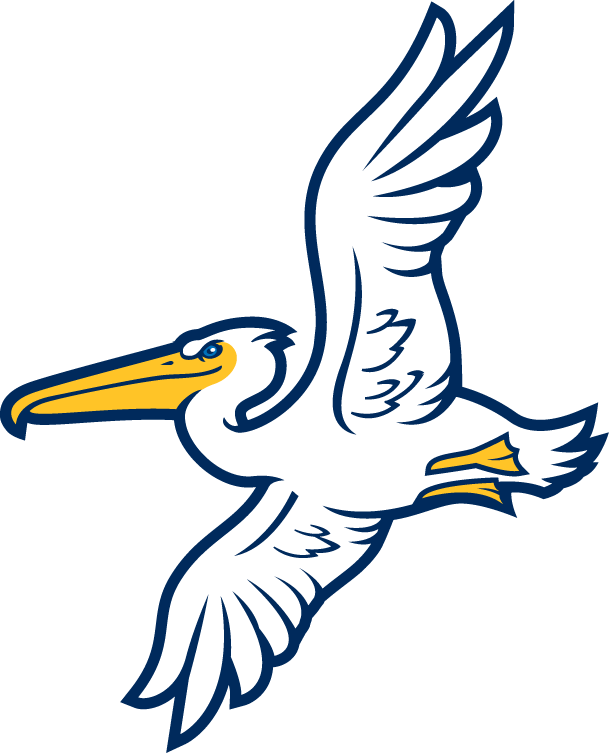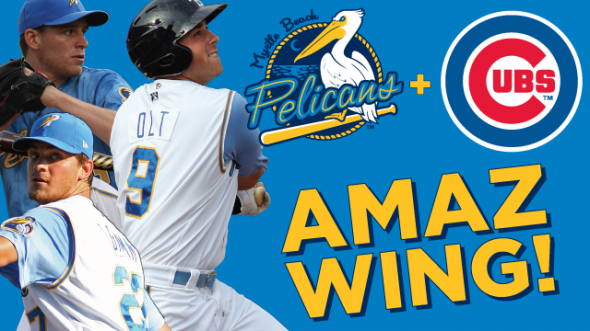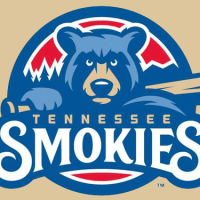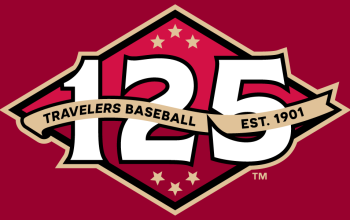Myrtle Beach is a tourist town on the coast of South Carolina. Known mostly for its extensive beaches, it’s a place where visitors can enjoy long summers, golf, shopping, one of the top boardwalks in the country, a couple different motorcycle rallies, the annual Canadian-American Days festival, and a butt cheek-free recreation experience, thanks to the city’s ban on thong bikinis.


Another thing you’ll find on coastal South Carolina is pelicans. As a sports mascot, pelicans are appropriate because they work in teams, are skilled predators, and can drain large amounts of liquid from their huge gullets, which, if you’ve ever been in a professional baseball clubhouse, you’ll know comes in handy.
With that in mind, Myrtle Beach’s minor league baseball team, which plays in the high-A Carolina League, goes by the name Pelicans. There are eight living species of pelicans, and South Carolina is home to two of the them—brown and American white. (Not the most imaginative names ever, but at least they’re not hard to remember.)
That said, the team’s owner, Chuck Greenberg, issued this caveat. “I’m told that the type of pelican in our logo is actually not indigenous to the area.” (Another fact of note related to this name: Pelicans were once thought to be related to tropical birds called boobies, but further research proved that they are not. That, combined with the city’s ban on thongs, means you won’t find butts or boobies in Myrtle Beach.)
 The Pelicans franchise debuted in 1980 as the Durham Bulls, where they played until 1997, when Durham was awarded a triple-A expansion franchise and the single-A team was forced to move. The team played the 1998 season in Virginia as the Danville 97s, where their adorable clip-art train with baseball wheels as a logo belied the fact that they were named after a tragic, fatal train wreck that occurred in 1903.
The Pelicans franchise debuted in 1980 as the Durham Bulls, where they played until 1997, when Durham was awarded a triple-A expansion franchise and the single-A team was forced to move. The team played the 1998 season in Virginia as the Danville 97s, where their adorable clip-art train with baseball wheels as a logo belied the fact that they were named after a tragic, fatal train wreck that occurred in 1903.
The franchise moved to Myrtle Beach for the 1999 season, where they adopted a teal identity because, as we’ve said before, it was the ’90s and that was the law. The name itself came from a name-the-team contest, except it didn’t, because name-the-team contests are basically always rigged.
“Legend has it that the original ownership and management was running a public name-the-team contest, and one day, the original general manager or one of his senior management people had a meeting with someone and said, ‘Oh yeah, we picked a name, it’s going to be the Pelicans, my son’s favorite name,’” Greenberg said. “They asked, ‘So what about the contest?’ So he goes, ‘Eh, my son picked Pelicans. We’re going to go with that.’ I don’t know for sure whether that’s true or not, but it’s a great story.”
When Greenberg purchased the team in 2006, his first order of business was to update the team’s visual identity—basically everything except the name.
“Pelicans happens to be a terrific name for Myrtle Beach, and it’s lasted all these years,” Greenberg said. “We tried to do right by the name by having logos and uniforms and marks that accurately capture the look and feel of the community…. We wanted something that a professional baseball player would be proud to wear, and yet which also represented the community and the team name.”
 The aim was to create something beachy. By the time Greenberg’s group took over, the Pelicans were wearing black and gold uniforms (as demonstrated by Martin Prado at right), and that didn’t feel quite right.
The aim was to create something beachy. By the time Greenberg’s group took over, the Pelicans were wearing black and gold uniforms (as demonstrated by Martin Prado at right), and that didn’t feel quite right.
“Being from Pittsburgh, black and gold certainly didn’t offend my sensibilities,” Greenberg said. “But even though there are an awful lot of people from Pittsburgh in Myrtle Beach in the summer, when I see black and gold, I don’t think beach.”
So the current identity, developed by Brandiose, takes a different approach. “The color scheme that we came up with, with the light blue and the gold and the way that we deployed them, it just has a light beachy, airy kind of feeling,” Greenberg said.
For a single-A team in a city whose year-round population of about 30,000 could fit inside any Major League Baseball stadium, it’s surprising to see them appear regularly on Minor League Baseball’s annual list of the top 25 teams in terms of merchandise sales. This may have something to do with the 14 million tourists the city hosts each year.
“The combination of having attractive and appealing marks and being in a strong tourist community has led to extraordinary merchandise sales for a market of our size,” Greenberg said. “We’re in the top 25 year in and year out.”
The Pelicans were affiliated with the Braves for the entire length of their franchise history, beginning with their debut as the Durham Bulls in 1980, until they switched parent clubs to the Rangers before the 2011 season. They switched again this past offseason and enter 2015 as an affiliate of the Chicago Cubs. With the affiliation change, there was brief thought given to a shift in identity.
“One of the fundamental decisions we had to make was, do we maintain our separate identity as the Pelicans or do we adopt the Cubs moniker?” Greenberg said. “What we decided was that the Pelicans brand was quite strong and rather than lose our identity, we would continue to embrace it.”
That said, the Cubs influence will be felt in South Carolina this season. “There’s going to be a very, very strong Cubs and Wrigley Field presence throughout the ballpark, whether it’s the use of ivy or the victory flag or a number of touches in a completely renovated clubhouse that really brings the feel of our parent club into our clubhouse, the types of foods that we’re going to be selling,” Greenberg said. “We decided to do it with experiential kinds of things rather than tinkering with the logos and the marks themselves.”
The Myrtle Beach Pelicans use a strong branding effort to fight for their place among the big boys of minor league baseball branding despite playing in small market. With a logo that shies away from the cartoony trend of recent years, the Pelicans logo has found success by representing its hometown so well that both tourists and locals embrace it.



















